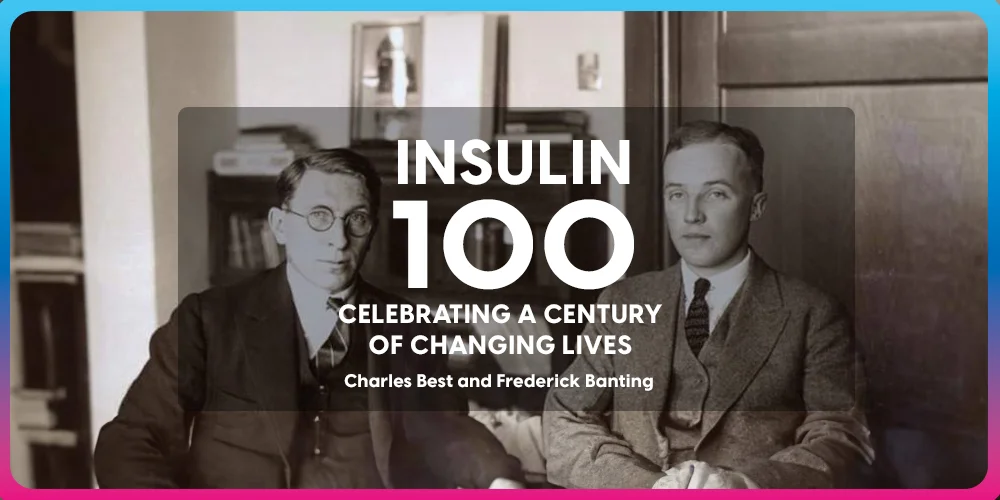Insulin Discovery: Celebrating a Century of Changing Lives

Since its discovery a century ago, insulin has played a pivotal role in revolutionizing the management of diabetes. This remarkable milestone in medical history has changed the lives of millions around the world, offering hope and transforming a once-fatal condition into a manageable one.
From the early breakthroughs in understanding diabetes to the tireless efforts of scientists like Frederick Banting and Charles Best, we have witnessed a remarkable journey of scientific discovery and innovation.
In this article, we delve into the origins of insulin, the impact it has had on diabetes patients, advancements in insulin delivery techniques, the future of insulin therapy, and the challenges surrounding affordability and global access.
Join us as we celebrate the remarkable achievements of the past century, reflecting on the milestones and looking ahead to the exciting possibilities that lie in the future of diabetes management.
A century of transforming diabetes management
You know what they say – time flies when you’re changing lives! It’s been a whole century since the discovery of insulin, and boy, has it made a difference in the world of diabetes management.
From turning a death sentence into a manageable condition to improving the quality of life for millions, insulin truly deserves a round of applause. So, let’s take a moment to celebrate this remarkable milestone and delve into the fascinating story behind it.
Understanding the significance of insulin in diabetes treatment
Diabetes is a condition that affects millions worldwide, causing the body to struggle with regulating its blood sugar levels. Before the discovery of insulin, diabetes was a serious and often fatal illness. Imagine having to live with the constant fear of a life-threatening condition, unable to enjoy a single slice of cake!
Insulin changed everything. It became the superhero hormone that the pancreas produces to help control blood sugar levels.
Without it, the body becomes like a confused and chaotic traffic jam, with sugar molecules bouncing around uncontrollably. Insulin acts as the traffic cop, directing those sugar molecules to where they need to go, ensuring everything operates smoothly.
The origins of insulin: Pioneering breakthroughs in diabetes treatment
Early attempts at diabetes management
Before insulin, people with diabetes had to resort to some pretty unusual methods to manage their condition. From strict fasting and low-carb diets to even consuming animal pancreas extracts, they tried anything that might give them a fighting chance. Talk about being desperate for a solution!
Important scientific discoveries leading up to insulin
Thankfully, scientists were hard at work unraveling the mysteries of diabetes. They made several crucial breakthroughs that paved the way for the discovery of insulin.
From identifying the role of the pancreas in diabetes to understanding how sugar metabolism works, these scientists who discovered insulin were on a mission to crack the code.
The scientists who discovered insulin: Frederick Banting and Charles Best
Their journey towards insulin’s breakthrough
Enter our dynamic duo – Frederick Banting, a determined young doctor, and Charles Best, a talented medical student. These two unlikely heroes teamed up to tackle the challenge of finding a way to extract insulin from the pancreas. With limited resources and a whole lot of determination, they embarked on a rollercoaster ride towards scientific glory.
Overcoming challenges and refining the insulin extraction process
It wasn’t all smooth sailing for Banting and Best. They faced numerous setbacks and failures along the way, reminding us that even superheroes have their off days.
But they persevered, tirelessly refining their methods until they finally achieved success. They discovered a way to extract insulin from the pancreas and named it “insulin,” because, well, they were creative like that.
The impact of insulin: Revolutionizing the lives of diabetes patients
Life before insulin: The dire consequences of uncontrolled diabetes
Let’s take a moment to appreciate just how groundbreaking insulin’s discovery was. Before insulin, diabetes was a real nightmare.
People faced constant thirst, weight loss, blurry vision, and even death. It was like living in a horror movie where the villain was an unregulated sugar monster. Not fun at all.
Improvements in quality of life and longevity post-insulin
But hold onto your glucometers, folks, because insulin changed the game! Suddenly, people with diabetes had a lifeline.
Insulin injections became a beacon of hope, allowing them to live longer, healthier lives. People could now enjoy a piece of that previously forbidden cake without putting their lives at risk.
Insulin truly revolutionized diabetes management, transforming it from a death sentence to a manageable condition.
So here’s to insulin and the incredible scientists who made it happen. Thanks to their brilliance, diabetes management became a little easier, and millions of lives were forever changed.
Cheers to a century of transforming diabetes, and here’s to many more years of saving the day with our trusty hormone, insulin!
Advancements in insulin delivery and administration techniques
Evolving insulin formulations and types
Insulin has come a long way since its discovery a century ago. Initially, it was extracted from animal sources, which posed limitations in terms of availability and consistency.
However, modern advancements have introduced synthetic human insulin, mimicking the body’s natural insulin more closely. Furthermore, scientists have developed different types of insulin, such as rapid-acting, short-acting, intermediate-acting, and long-acting insulins, allowing for more precise blood sugar management.
Innovative devices for insulin administration
Gone are the days of using large, intimidating syringes for insulin injections. Today, there is a wide range of user-friendly devices available for insulin administration.
Insulin pens have become increasingly popular, offering convenience and ease of use. Additionally, insulin pumps have revolutionized insulin delivery by continuously infusing insulin into the body, eliminating the need for frequent injections.
These devices not only improve accuracy but also enhance the overall experience for individuals managing diabetes.
The future of insulin therapy: Innovations and challenges
Exploring potential alternatives to traditional insulin therapy
While insulin remains the primary treatment for diabetes, researchers are diligently exploring alternative methods to enhance its efficacy and convenience. One promising avenue is the development of oral insulin formulations, which would eliminate the need for injections altogether.
Additionally, scientists are investigating new technologies like inhalable insulin and “smart” insulins that can adjust dosages based on glucose levels in real-time.
Addressing challenges in insulin delivery, dosing, and adherence
Despite the advancements in insulin therapy, challenges persist in optimizing its delivery, dosing, and patient adherence. Precise dosing remains crucial to ensure effective blood sugar control.
Innovations such as closed-loop systems, where continuous glucose monitoring systems communicate with insulin pumps to automatically adjust insulin delivery, hold great promise. Moreover, efforts to improve patient adherence through educational programs, behavioral interventions, and support systems are vital in achieving optimal diabetes management.
Insulin affordability and global access: Addressing barriers to care
The rising cost of insulin: Implications for patients
One major concern surrounding insulin therapy is its rising cost, which has led to affordability challenges for many patients. The financial burden often forces individuals to ration or even forgo insulin, compromising their health and well-being.
This issue highlights the urgent need for policy changes, increased transparency, and advocacy to ensure that this life-saving medication remains accessible to all who need it.
Initiatives to improve insulin affordability and access worldwide
Recognizing the urgency of the insulin affordability crisis, numerous initiatives and organizations have emerged to address this issue. Non-profit organizations, governments, and pharmaceutical manufacturers are collaborating to develop innovative pricing models, expand access programs, and promote generic competition.
Furthermore, advocacy efforts are crucial in raising awareness and pressuring policymakers to take action, ensuring that everyone has access to affordable insulin.
Celebrating a century of changing lives: Reflecting on the milestones and looking ahead
Recognizing the impact of insulin on diabetes care
As we celebrate the centennial anniversary of insulin’s discovery, we reflect on its profound impact on diabetes care. Insulin has transformed the lives of millions of individuals worldwide, allowing them to effectively manage their diabetes and lead fulfilling lives. It has become a symbol of hope, resilience, and scientific achievement in the fight against diabetes.
Future prospects for diabetes management and treatment
Looking ahead, the future of diabetes management holds great promise. Emerging technologies like closed-loop systems, advanced glucose monitoring devices, and artificial intelligence-driven algorithms offer exciting possibilities for improving treatment outcomes.
Researchers are also exploring regenerative medicine approaches, aiming to develop therapies that can restore or protect pancreatic beta cells, potentially eliminating the need for external insulin altogether. With continued scientific advancements and a collective commitment to accessibility, the next century of diabetes care is poised to be transformative.
Celebrating a century of changing lives: Reflecting on the milestones and looking ahead
As we commemorate a century of insulin discovery, it is a time to celebrate the tremendous impact this breakthrough has had on the lives of those living with diabetes. From the early pioneers to the advancements in insulin delivery and the ongoing efforts to improve affordability and access, we have come a long way.
Yet, there is still work to be done. Looking ahead, we envision a future where innovative therapies and technologies continue to improve the lives of diabetes patients.
Let us continue to champion the legacy of insulin and strive for a world where diabetes management is even more effective, accessible, and equitable for all.
This blog provides general information for educational and informational purposes only and shouldn't be seen as professional advice.
Fitterfly's Diabetes Prime Program
clinical term for Diabetes Reversal
























